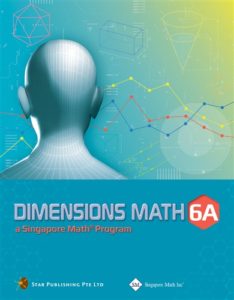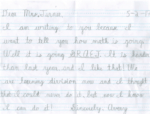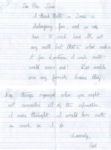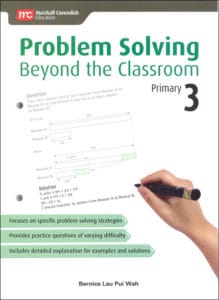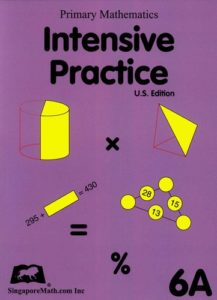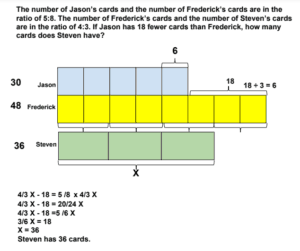Regular readers might know that I like to pause and take stock at this time of year. I broke that stride in 2016, but I’m doubly grateful to be back on track, with twice as much to share.
This year, I’m celebrating my 10th year as an independent Mathematics trainer/coach/consultant and 15th year working with Singapore Mathematics.
Thank you.
I say this every year, but it continues to be true: I am so grateful for the opportunity to champion elementary math education and to be able to spend time so much time in classrooms with teachers and students. I extend my heartfelt thanks to everyone who has played a part in making the past two years so special.
I am humbled and honored by the demand for my coaching and training services that have been growing year after year. For some time, I’ve known that I could not personally meet the needs of all the schools seeking help. Despite that reality, I wasn’t about to expand without the perfect partner: someone who shares my passion for math education, someone with a deep understanding of teachers, students, math, and years of classroom teaching experience.
Beth Curran
Fortunately, I found that person in Beth Curran, my fabulous colleague. In June 2016, I was thrilled when Beth took a leap of faith and agreed to join Math Champions Professional Development. Before she joined Math Champions, Beth was an award-winning classroom teacher, department chair, and lead math teacher, specializing in the Singapore math approach.
Beth jumped right in as Math Champions’ Lead Trainer and Instructional Coach, visiting several dozen schools in more than a dozen states in her first year on the job. Beth’s knowledge, expertise and ability to relate to the varying demands of classroom teachers earned rave reviews (and LOTS of repeat visits to) from school clients. She is also my trusted confidant, coach, and advisor. I am so thankful to have found someone so dynamic as Beth.
Schools, Roles, and Curricula 
Of course, We’re extremely thankful for our clients. In the last 18 months, Beth and I have worked with 55 schools/clients in 20 states as well as Germany, China, England and Canada. We’ve had all manner of roles; overseeing new curriculum adoptions, coaching teachers, coaching coaches, and advising administration. We’ve worked with all varieties of Singapore curricula, including:
- Elementary programs (Primary Mathematics, Math in Focus, Math Works, Eureka Math, Engage NY, Inspire Maths and Maths No Problem);
- Middle school programs (Dimensions Math, Math in Focus, and New Elementary Math)
We’ve even developed hybrid programs, crafted to meet the particular needs of schools seeking a solution unavailable from off-the-shelf materials.
Jumpstart Your Singapore Math Instruction
In July 2017, Beth and I hosted Jumpstart your Singapore Math Instruction, our inaugural public workshop in St. Paul, MN. We were delighted by the overwhelmingly positive response to the program and plan to offer Jumpstart again in Minnesota (July 30 & 31) as well as other markets. We’re also planning other programs in 2018 (sign-up here to get on our notification list). Thanks to those who attended Jumpstart and to our host, Mounds Park Academy, for their superb facility and hospitality.
Regional, National, and International Presentations
I’m a big believer in continuing education and for many years have attended math educator conferences to learn from my teaching colleagues. Additionally, We’re truly thankful for speaking opportunities at so many of these gatherings. 2016 was especially remarkable; I presented at:

- Keynote, Oxford University Press, International Forum on Singapore Math (Oxford)
- researchED, Maths and Science Conference (Oxford)
- researchEd Washington, DC
- NCTM Annual Meeting
- NCSM Annual Conference
- National Conference on Singapore Math Strategies
- NCTM Innov8
- Colorado Council of Teachers of Mathematics
- California Mathematics Council (South)
Beth has quickly become a crowd favorite at conferences. Here’s a selection of our speaking gigs in 2017:
Beth
- NCSM Annual Conference
- National Catholic Educational Association
- California Mathematics Council (North)
- California Mathematics Council (South)
Cassy
- NCTM Annual Meeting
- National Conference on Teaching Math
- NCTM Regional Meeting
- National Catholic Educational Association
- California Mathematics Council (South)
- Association of Mathematics Teachers of New York State
Looking Ahead!
2018 promises to be even more busy and exciting. We arere looking forward to:
- Partnering with a growing number of schools interested in long-term projects.
- New and improved website!
- Presenting at the April 2018 meetings of:
- NCSM in Washington, D.C.
- NCTM in Washington, D.C.
- National Catholic Educators Assn in Cincinnati, OH
- Jumpstart Your Singapore Math in MN, CO, CA (?) and an east coast venue that has yet to be determined.
- Sharing news about the successes achieved by some of the schools we’re working with — please let us know if you want to be a part of this series.
- Opportunities that are, as yet, unknown. We can’t wait to see what the new year will bring!
Finally, we are eagerly anticipating sharing some big news this spring about a project that’s been in the works…
Personally,
2017 has been gratifying for Cassy as:
- Sons continue to grow into fine young men – one is expected to graduate from Colorado State University this spring with his Mathematics degree!
- I once again surpassed my goal of reading 50 books in the year, by reading 57 books (but there’s still l time to add to that!)
And also for Beth as she has:
- Spent time with her two grown children and grandchild.
- Enjoyed traveling and cashing in on all those newly found frequent flyer miles!
- Moved just outside of Roanoke, Virginia and is embracing the small town culture.
Special Thanks this year to…
- Singapore Math Inc.
- Bureau of Education of Research (BER)
- EAI Education
- Staff Development for Educators (SDE)
- Mounds Park Academy
- Friend and trusted advisor, Allison Coates
Once again, our sincerest thanks to clients, colleagues, and partners for making 2016 and 2017 such wonderful years. If we may be of service at any time, please don’t hesitate to get in touch.
As passionate as ever about Singapore Mathematics,
-Cassy & Beth

